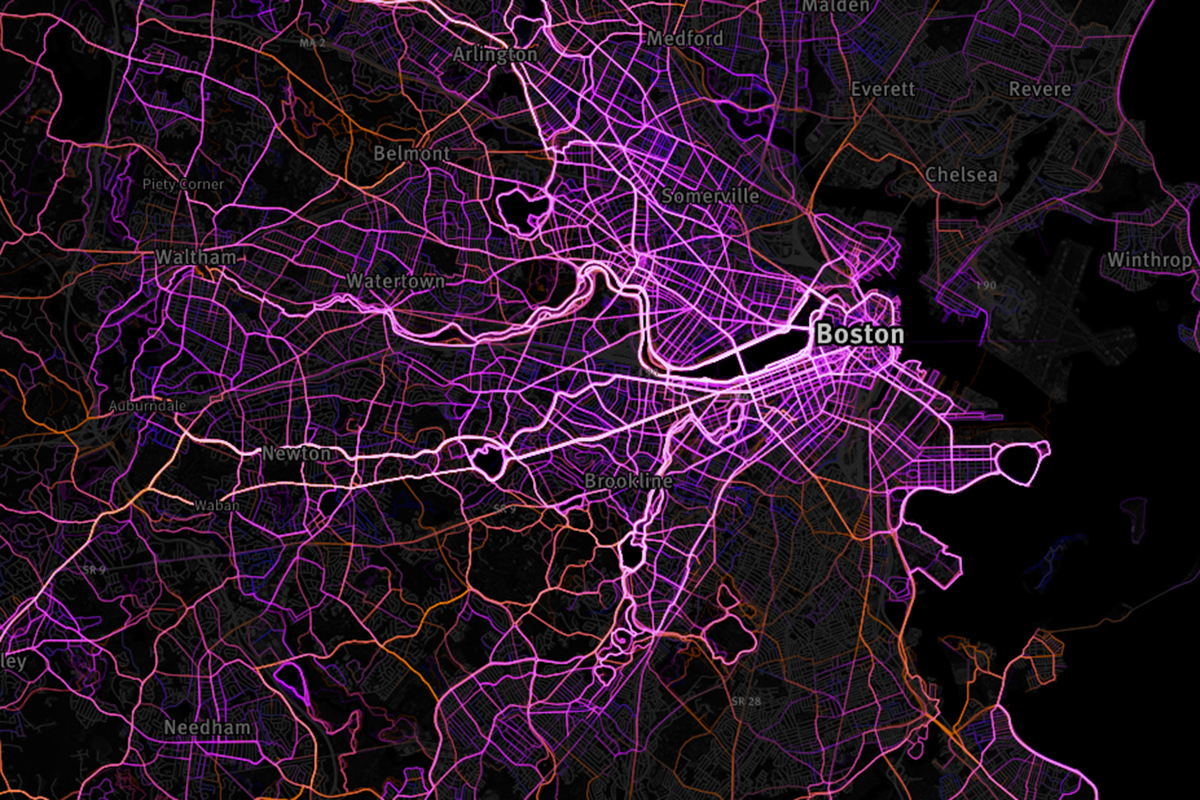The Most Pounded Pavement in Boston Is…Everywhere

Screenshot of a Mapbox map of beautiful boston
Mapbox, a Washington D.C.-based open-source mapping platform, teamed up with Boston-based RunKeeper and compiled maps of the routes runners take in a variety of cities around the world. In fact, it’s 1.5 million walks, runs, and bike rides. The maps are beautiful and profiled in recent feature by Grist.
There are a number of similarities between the cities: runners are drawn to bodies of water, and cities have much foot traffic than the suburbs. But, there are also a couple of caveats: First, the maps were made with the RunKeeper app only. So, as the Grist article points out:
…which means that it’s more a record of a certain “affluent enough to have a smartphone” and “nerdy enough to track their running habits on said phone” segment of society than of humanity at large. This absolutely explains why, on the map, a country like England is exploding with runners, but it looks like no one in Algeria ever leaves the house.
Second, it doesn’t distinguish between running, walking, and biking. Still, it’s pretty amazing to be able to see where people are hitting the pavement in Barcelona and other spots around the world.
Which brings us to our fair city. I’ve written a few times that you can’t swing a handbag on the sidewalk in Boston without hitting a passing runner. In February. In a foot of snow. But, it’s always a pleasure to read when other people discover the running scene in our city. After reporting the story and reviewing the maps for Grist, Heather Smith, who is also a runner, has written one of my favorite reactions to our city’s favorite pastime. Smith writes:
I have never lived in a city as mad for running as Boston. It may have something to do with the cerebral nature of the place — people amp up the physical activity in order to compensate for so many hours sitting still and staring at things. What stands out here to me is that Boston is not what I would describe as a fun city to run in: The obstacles are many, the cars are mercenary, and the footpaths are so crowded that runners and pedestrians and cyclists come into frequent conflict. But still, the runners’ paths fan out all through the city — not just the parks and waterfront. What is Boston doing right? Or what is happening in Boston, despite itself? These maps don’t answer that question, but at least they raise it in an interesting way.
Smith doesn’t mention our city’s frigid winter temps or the numerous sneaker companies that are based in Massachusetts, but she makes a really good point: What is Boston doing right, despite itself? Pretty much everything, I’d say.


